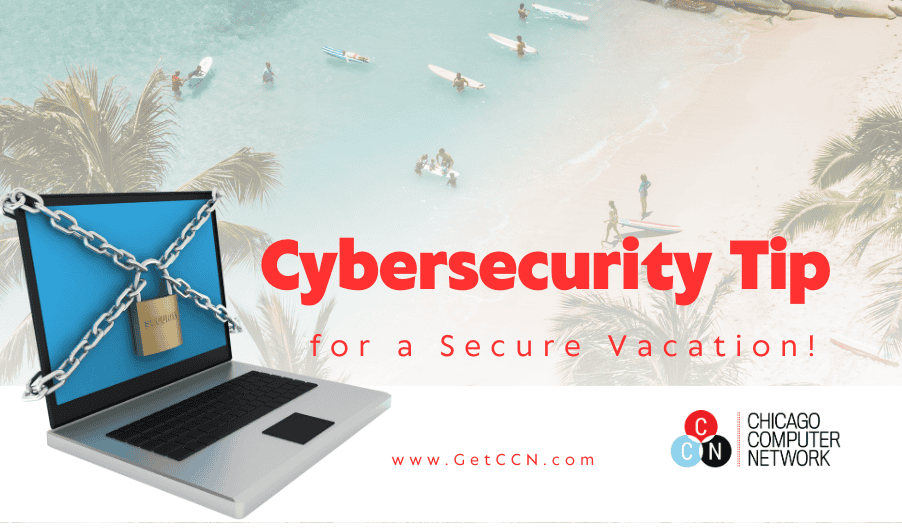Summer is the prime season for business owners and employees to step away from the office and enjoy a well-deserved break. Even with an “out of office” email responder, many individuals will still check in on work periodically while traveling. Unfortunately, studies reveal that working outside the office—whether it’s checking emails during vacation, connecting to the Internet at a local coffee shop, or accessing documents from a hotel lobby—can significantly increase cybersecurity risks. To protect your company’s network from hackers lurking nearby, it’s crucial to follow strong cybersecurity practices.
In this blog post, we’ll outline essential cybersecurity practices to adopt before and during your trip to keep your network secure from potential threats.
Why Cybersecurity Matters While Traveling
While cybersecurity might not be on the top of your vacation checklist, overlooking it can turn a dream getaway into a cybersecurity nightmare. Cybercriminals target travelers more frequently during the summer, knowing that people are more likely to let their guard down while on vacation. As most vacationers focus on enjoying their time off rather than adhering to cybersecurity best practices, they become easy targets for hackers.
To minimize the risk of a cyberattack while traveling, here are several key practices for anyone on your team who might connect to the Internet while away.
Before You Go:
- Back Up Your Data – Ensure you have a copy of your data available for restoration if your device is lost or damaged.
- Update Your Software – Confirm that your operating system, web browsers, and apps are updated to the latest versions. Outdated software can leave your device vulnerable to malware.
- Protect Your Devices – Always lock your device using a PIN, passcode, fingerprint, or facial recognition. Set this up before traveling to prevent unauthorized access.
- Enable “Find My Phone” – This feature allows you to locate your device if lost and gives you the option to remotely wipe data or disable the device if needed.
While Traveling:
- Use a Virtual Private Network (VPN) – A VPN encrypts your Internet connection, securing your data even on public WiFi networks. Set up a VPN before you leave and use it whenever you connect to the Internet.
- Avoid Public WiFi – Public WiFi can be a hotspot for cybercriminal activity. Stay away from unprotected networks and refrain from accessing sensitive information without a VPN.
- Manage Location Services – Turn off location services when not in use to avoid exposing your whereabouts. Limit location sharing on social media as well.
- Enable Multifactor Authentication (MFA) – MFA adds an extra layer of security by requiring a second form of verification, such as a text message code, authenticator code, or fingerprint scan, for accounts with sensitive information.
- Disable Auto-Connect Features – Turn off automatic connections to available wireless networks to prevent your device from connecting to potentially unsafe networks.
Following these precautions allows you to relax on vacation while keeping your device secure, ensuring you can enjoy your time off without worrying about cybersecurity issues when you return.
However, these steps are not foolproof. To ensure your company’s cybersecurity measures are robust, collaborate with a professional IT team that can monitor your network around the clock, address vulnerabilities, and alert you to any suspicious activity.
To prepare for your vacation with confidence, knowing your business is secure while you or your employees work remotely, call us at (312) 767-1250 or click here to schedule a FREE IT Security Risk Assessment with our cybersecurity experts. We’ll review your current cybersecurity solutions, identify potential vulnerabilities, and help implement a strategic security plan to keep your company safe.

